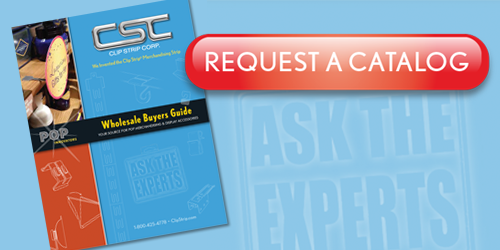Categories
Services & References
History of the Clip Strip® Video
How to Manage Your Small Retail Inventory
The most important asset in a small retail business is the inventory. According to the management, it’s critical to measuring shrinkage, managing costs and improving customer shopping experience.
A good inventory management system gives up-to-date information on what’s selling fast, what you have in stock and what’s en route. This means you will have all the information that you need to spot theft, expand winners, and increase your profits.
Here is how to manage your small business inventory:
Stay Organized
The first step is to instruct the employees to fold, re-merchandise continually and organize the inventory. In a small retail business, you can always expect the customers to handle inventory. It could result in items being shelved wrongly or folded incorrectly. This is one area shelf dividers can help.
This is why it’s important for the staff continuously to maintain an orderly appearance of the inventory. It will not only improve the overall shopping experience, but will also help in managing the inventory.
While organizing your inventory, you may include details such as:
- product name
- picture
- wholesale price
- retail price
- shipping information and description.
- (Use retail sign holders to accomplish these goals)
Create and Submit Accurate Purchase Order
Creating and submitting an accurate purchase order is also one of the most important things when it comes to managing inventory. Disorderly or confusing purchase orders may end up costing the business time and money.
You need to set apart a specific day in which to submit purchase orders. This minimizes any chances that you will get distracted with other tasks or let any errors creep in your management.
Conduct a Physical Count of the Inventory
While managing inventory, it’s advisable that you conduct a physical count of the entire inventory. Unfortunately, due to some things, inventory shrinkage can occur. It can happen because of misplaced merchandise, theft, damage or even loss.
It would be good then that you carry out a physical count of the same to actively manage inventory. This not only keeps tabs as they occur but also supports inventory evaluation.
If the counts are lower than expected, then theft might be the problem. This should be addressed by the management.
Use Loss Prevention Tags
Using loss prevention tags and stickers on items, secure these to products with items such as super loop tagging fasteners, these tags play a critical role in the management of inventory. It will help to deter theft in the store.
When each item in your store has a loss prevention sticker attached, it forces the employees to handle every single item well before scanning it for the client.
The item that hasn't had its loss prevention tag deactivated will beep when it passed through the sensors, alerting you or your employees of any potential mishap.
Well, that is how to manage small retail inventory.







 Facebook
Facebook LinkedIn
LinkedIn YouTube
YouTube